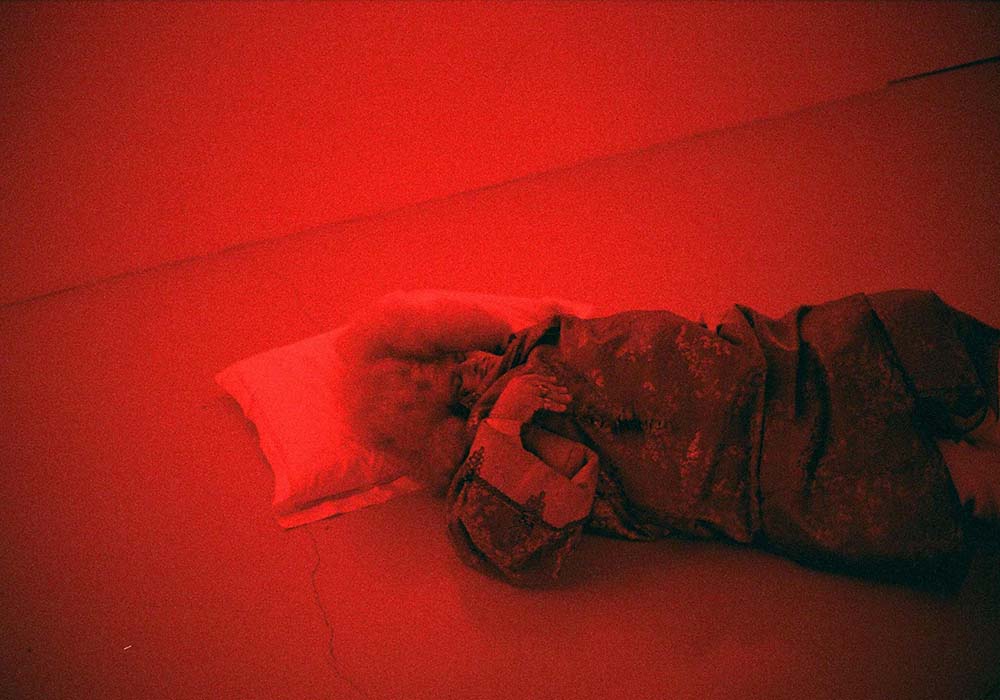[dropcap letter=”I”]
n the 21st century, we consider we are free of taboos, but death continues to disturb us. We venerate forever young, we foster second and third youths and we applaud seventy-year-olds who are young at heart. But it is hard to talk about death and to accept it. We may live saturated with images of death, but we always avoid it. At a funeral, for example, if someone asks to see the corpse, they are often taken to be a morbid lunatic, or a thanatopraxia enthusiast. And that’s with television brining it into every single living room, with a daily inventory of death in all the news.
In one chapter of the essay L’ull i la navalla (The Eye and the Razor), Ingrid Guardiola enumerates the multiple faces of death on screen, from the “implied images”, like the skid-marks for a traffic accident, through the icons of massive death tolls—the twin towers—to the slaughter-porn and degeneration that ISIS posts on the social networks. The search is paradoxical, while “television is able to fill with mortuary tales,” at the same time, it maintains death as a taboo, because it is “never represented.”
And it is precisely because we always avoid it that many artists have made a raw material of it, inspired by the wish to exhibit what we do not want to see, to rub salt into the wound. At the Royal Academy in London for example, this winter we have seen a retrospective exhibition of video artist Bill Viola’s work, including a multi-screen installation that showed a real birth and death. During the 30 minutes of the simultaneous projections of the Nantes Triptych, we saw a woman giving birth live in the channel on the left, while on the right we saw a life—that of Bill Viola’s own mother—that flickered and died in a hospital bed, filmed with her consent as she passed away. The viewer has to choose which image to turn to, whether the life that begins or the one that extinguishes, and for most eyes in the room, the fixed shot of the old woman breathing slower and slower was much more hypnotic than any newborn cry. I have rarely felt such a thing at a museum: voyeurism and fear suddenly gave way to a strange feeling of intimacy, and at the end it was all goodness and extraordinary affection towards that stranger embarking on her infinite journey.
In fiction, Catalan film-maker Albert Serra proposed a similar experience a couple of years ago in La Mort de Louis XIV. The film describes the last days of the Sun King—Jean-Pierre Léaud in a sensational wig—while he agonizes surrounded by doctors who do not know what the hell else they can do. The most powerful man in the world is dying of gangrene, and Serra’s movie, set [almost] entirely in the monarch’s room, is so distressing and realistic that viewers begin to feel they can smell the protagonist’s rotting leg.
Along with the feature film première in Cannes, Serra had planned to hang a transparent cube with a bed in the middle of the Centre George Pompidou, where he thought of putting Jean-Pierre Léaud as the Sun King himself, with the idea that the Parisian public would see the actor agonizing during the three months that the installation lasted. Finally, the project was discarded—due to lack of funds, and because the French star pulled out—and Serra and his troupe set up a budget version at the Graça Brandao Gallery in Lisbon. For a week, the King Sun would die every evening before his audience. But on that occasion, Louis XIV was not Léaud, Truffaut’s pet actor, but Serra’s favourite, Lluís Serrat, who after featuring in his films as Sancho, Fassbinder and one of the Three Wise Men, just had to be the Sun King.
The Tàpies Foundation is now giving you the chance, thought to mid-June, to relive that experience with the Sun King in a 62-minute video that documents the agony of the monarch within the white walls of the art gallery, a tour de force by Lluís Serrat, who spent 4 hours dying every evening, and who couldn’t speak or stretch to avoid falling asleep. Real or fiction, the chance to see death live is always a personal challenge.



















